My Hair, a Tragic Love Story
I didn't know what I had till it was gone. Plus: 5 awesome hair products for everyone
For much of my life, I had thick, dense hair. My ponytail had girth. During each of my three pregnancies, it grew to full, swaying Disney Princess hair then returned to its usual, still-lustrous state soon after. Until recently.
About two years ago, I was hit with a perfect storm: age, stress, postpartum hormones, a 10-day bout with Covid, a hidden vitamin D deficiency. Suddenly, my hair was falling out in clumps.
People with hair loss often talk about digging a tangled nest out of the shower drain but I was also constantly collecting my fallen soldiers from anywhere I laid my head—my pillow, our sofa (choosing a cream-colored couch suddenly felt like a terrible idea). Add to that, we had moved to LA where the water is notoriously hard and the air is dry. So my existing hair had become damaged and brittle. Cue, breakage.
The shedding happened so intensely and quickly. By the time I fully clocked how much hair I had lost, my ponytail had shrunken by more than half. During a trim, I was so nervous about losing more, I whispered to the girl washing my hair that I was going through some hair loss and asked if she could be super careful. While my hairstylist Chaie combed my wet hair out, she noticed the drop in volume right away.
READ: My favorite sunscreens and a word on dark spots, my old enemy
“Did you have Covid?” she asked. She had seen a lot of clients around that time who had been dealing with post-Covid shedding (likely caused by the very-fun-to-say but not-fun-to-have telogen effluvium, the type of hair loss people experience from a big physical or emotional stressor.
How I’m dealing with hair loss
In all my years working in beauty, I knew enough about hair loss to understand that quick intervention is key. So I booked an urgent appointment with my dermatologist, Dr. Sheila Farhang, who prescribed a compounded topical solution called HairStim. Everyone’s formula can be a bit different but mine looks like this:
Minoxidil: 7%
Proprietary Base without Propylene Glycol: 30ml
Latanoprost: 0.05% (aka Latisse)
Spironolactone: 0.25%
I apply a few drops mostly around my part and other sparse areas morning and night then rub into my scalp. Full transparency: it’s a bit pricy ($120 for a bottle that lasts me about a month) and smells faintly like eggs (although I’ve gotten used to it and…I like omelettes). Another downside is that it makes my roots look and feel greasy by day two. And it’s not a good idea to use dry shampoo or other scalp-covering products (like root touchup) while you’re using topicals since they can interfere with the efficacy of your treatment. But to be honest, who cares. I’ll gladly trade some short-term inconvenience for long-term results.
Can you use less expensive options? Absolutely. The Musely Hair Solution (it’s telehealth so it’s Rx and about $1/day) is quite good and there are also OTC minoxidil treatments, even sold at Costco, but the strength that you can get over the counter is much lower so, while it may work over time, the Rx version will be faster and more potent.
Dr. Farhang also set up a full blood panel for me and we discovered that my Vitamin D levels were low (30 ng/mL is optimal and I was at 24), which can contribute to hair loss. My diligent sun protection had apparently been very diligent. After taking a daily supplement, my levels regulated quickly. Side note: low ferritin, or iron, is also a common culprit.
READ: 7 Greatest Lipsticks Ever—and 3 That Didn't Work Out
Dr. Farhang also suggested that I could take Nutrafol supplements (which includes A, C, D, biotin and other nutrients) so I’m taking four pills of their Women’s Balance formula a day. I figured it can’t hurt as a temporary stop-gap since I fully admit that my busy working mom diet is likely lacking in some things.
How to fake more hair
Losing your hair as a woman can be a real mindfuck. We’re taught from a young age that everyone in the world values our physical appearance over everything else but that caring about said appearance will make us look vain. You just can’t win. So I say: you do you. Yes, it’s healthy to just not care but the reality is, I do. And that’s okay. Here’s what I’ve done:
Luxy Hair Halo Extensions
These extensions are made from real human hair and come in different lengths (12, 16, and 20 inches) and colors. If I need extra volume for an event or party, I’ll wear these. The 16-inch ones blend in with my hair and don’t add extra length. They’re very seamless so you really can’t tell. The clear band sits on top of your head like a headband and there are clips underneath so you can secure it. Super easy. Are they as “perfect” as professional extensions? Certainly not. But for a special occasion, they’re nice and you can style them like they’re your own hair. I also have 20-inch clip-ins that add more drama and length. That being said, I use these sparingly since regular pulling and tugging (like tension from clips) is not great for hair loss.
A real-hair topper
Toupées have been the butt of jokes for years but unfairly so, in my opinion! The female equivalent is a topper (have you heard of it?). Female pattern hair loss tends to be extra visible at the temples and part, so a topper helps cover those areas. Once hair is regrowing, it can also look spiky and odd, so laying a hair piece on top can help smooth things over and mask a wide part or bald spots. Toppers typically have clips on the underside that attach to your roots.
READ: Out, Damned Dark Spots: How I Finally Faded My Hyperpigmentation
They come in lots of price points. I can’t personally vouch but I’ve read great things on Reddit hair loss communities about Highline Wigs toppers. They’re expensive ($1,000+) but that seems to be the brand that people love most. For something you might wear every day, it might be a good investment. I, for one, was testing the waters and ordered one from Amazon for $73. Listen, you get what you pay for. I recognize that I’m not fooling anyone close-up but when I’m on a Zoom call, it looks pretty natural!
And if not anything else, my kids got a real kick out of this thing.
Products to make hair look thicker
Half of dealing with hair loss is creating the illusion of thickness.
Michiru Fullness Shampoo
I’ll be honest, I haven’t been blown away by volumizing shampoos (I just don’t know if I feel a difference?). The one I’m currently trying is Michiru which seems good but the jury is still out.
Kitsch Heatless Curling Set
To preserve the health of your hair, it’s a good idea to go easy on the excessive heat styling. Inject some extra body into limp hair using heatless curlers like these.
5 products to make hair healthier
Breakage and regrowth can look similar. So, how can you tell the difference? In general, new growth looks finer and more uniform while breakage leaves more of a coarse edge.
Even if you’re not experiencing hair loss, it’s never a bad thing to get your hair healthier. Here are a bunch of products I’m loving at the moment:
Mielle Strengthening Hair Mask
So obsessed with this affordable rosemary mint mask. I use a mask instead of conditioner every time I shampoo.
Colorwow Money Hair Mask
Feels so luxe. It’s also my teenage daughter’s all-time favorite. It smells wonderful and earns the name wow.
Moroccanoil Hydrating Styling Cream
A new discovery. Just started using this on damp hair and I could see an instant difference in the smoothness of my hair when I air-dry.
Jolie Filtered Showerhead
Hard water can leave mineral deposits that damage hair. Invest in a shower filter like this one, which can also help your skin.
Silk pillowcase
I love the Slip silk pillowcases but they’re pricy at $89. If you’re new to the silk game, try a more affordable one from Amazon first.
A forever struggle?
I’d say I’m still in the middle of my hair loss journey (I’m trying not to think of it as a battle). Treatment seems to be working but it’s certainly not fast. There are other tactics I could try like oral minoxidil, PRP, laser caps, and more.
You could really drive yourself crazy, and broke, with it all. I always prided myself on not being too attached to my hair. I had many an impetuous chop in my younger years that I never gave a second thought (except for one very unfortunate pixie cut in college). But this feels different. An impulsive hair cut is easily remedied over time because hair grows. Hair loss feels less certain. It touches a more raw nerve, one wrapped up in anxieties about age, desirability, even mortality. These days, I mourn my old hair. I’m sad that I didn’t appreciate it more.
I’m supposed to tell you that it’s better to get right with what’s in your head than what’s on your head. But that’s easier said than done. Is anyone out there dealing with hair loss? How are you handling it? I’ll be chatting all week in the comments. Let’s talk.


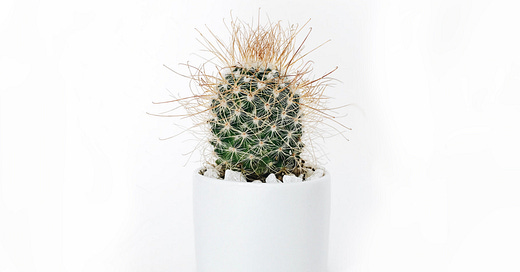



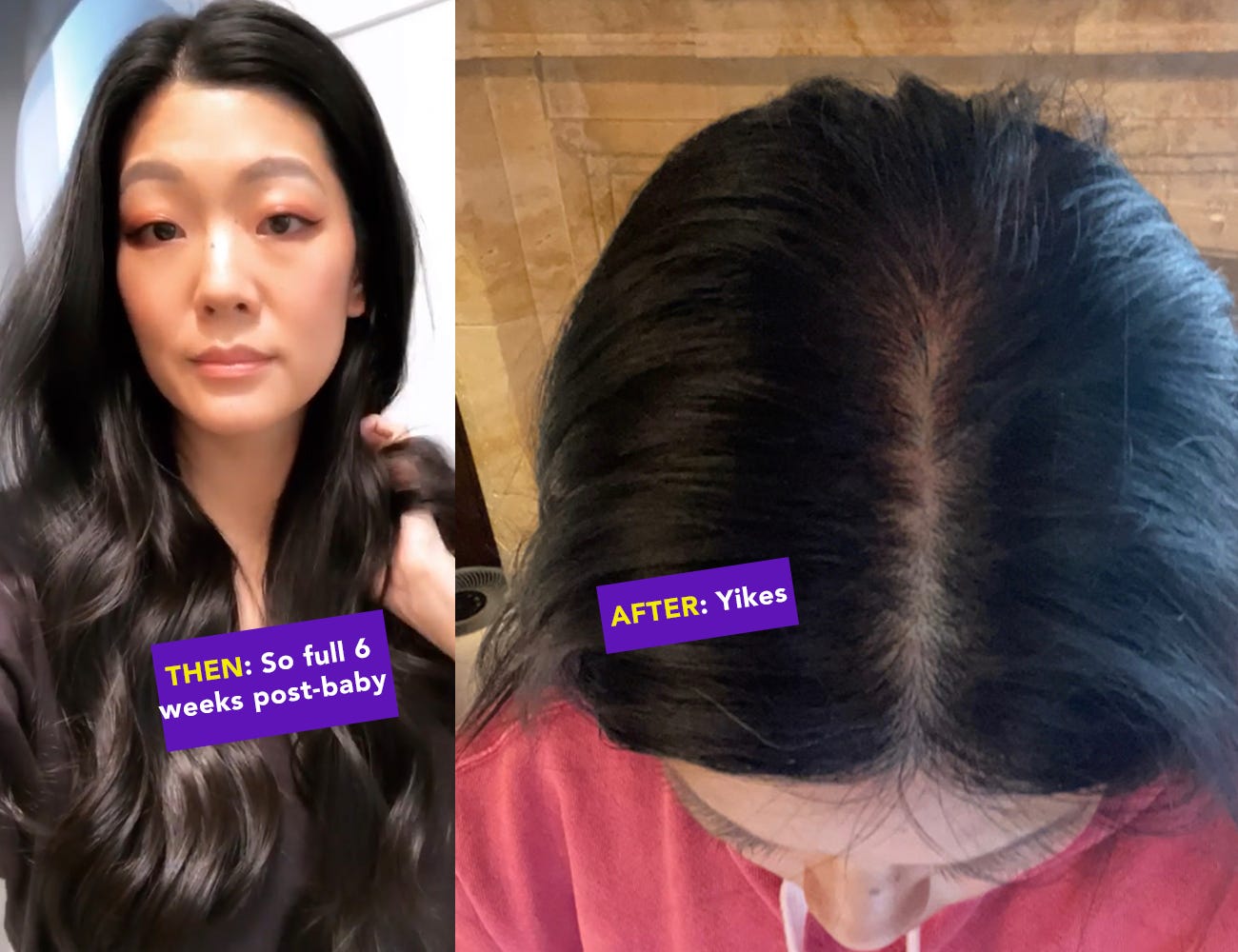
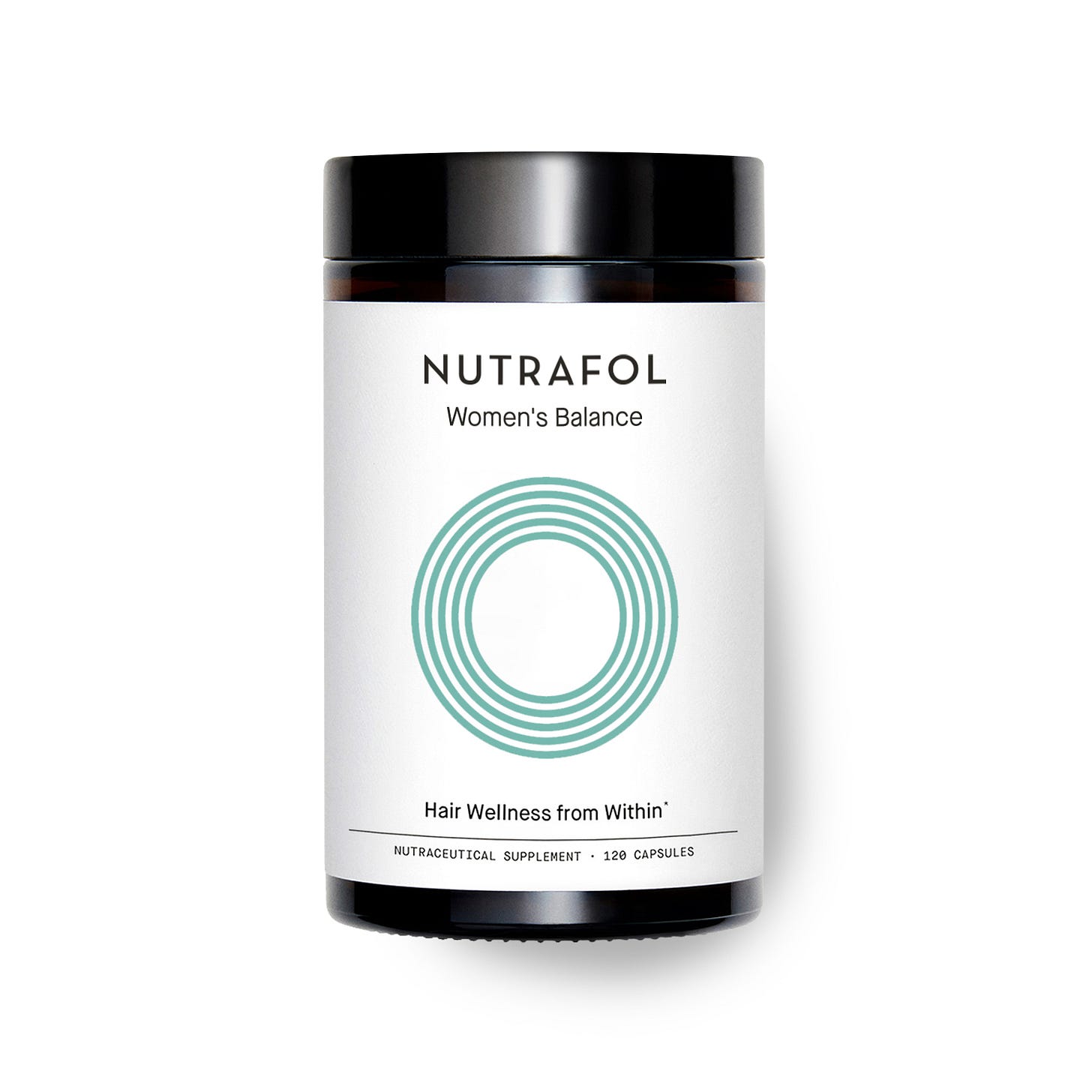
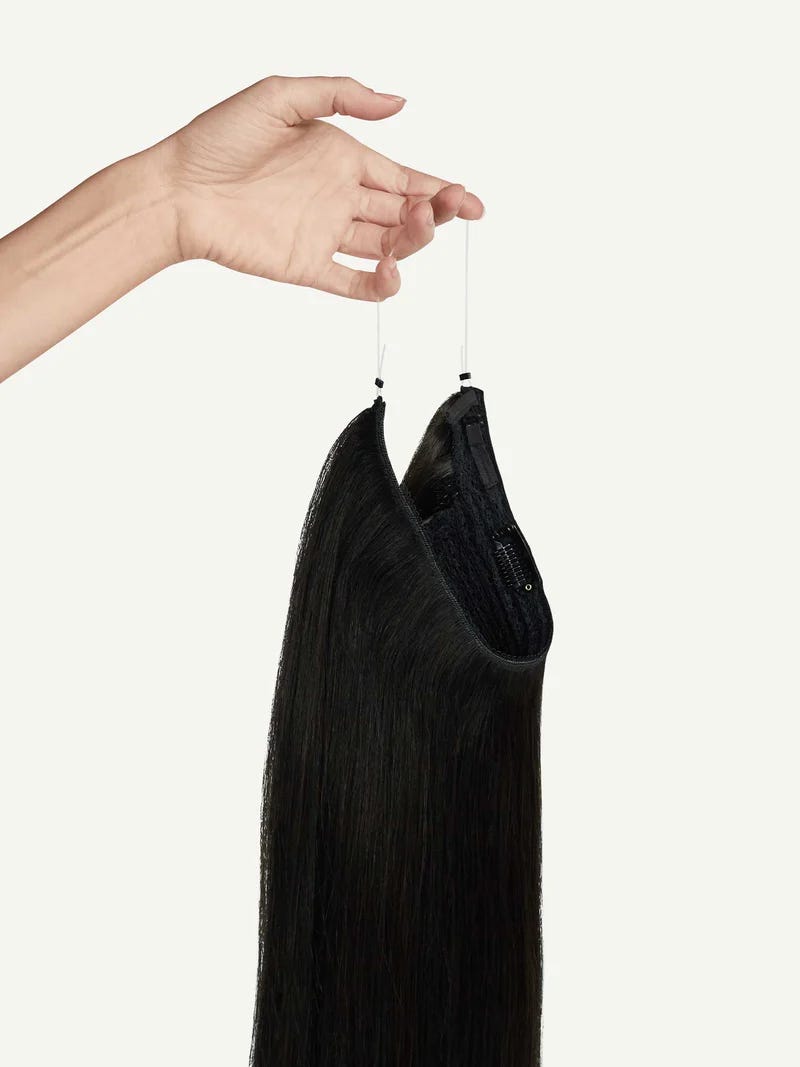
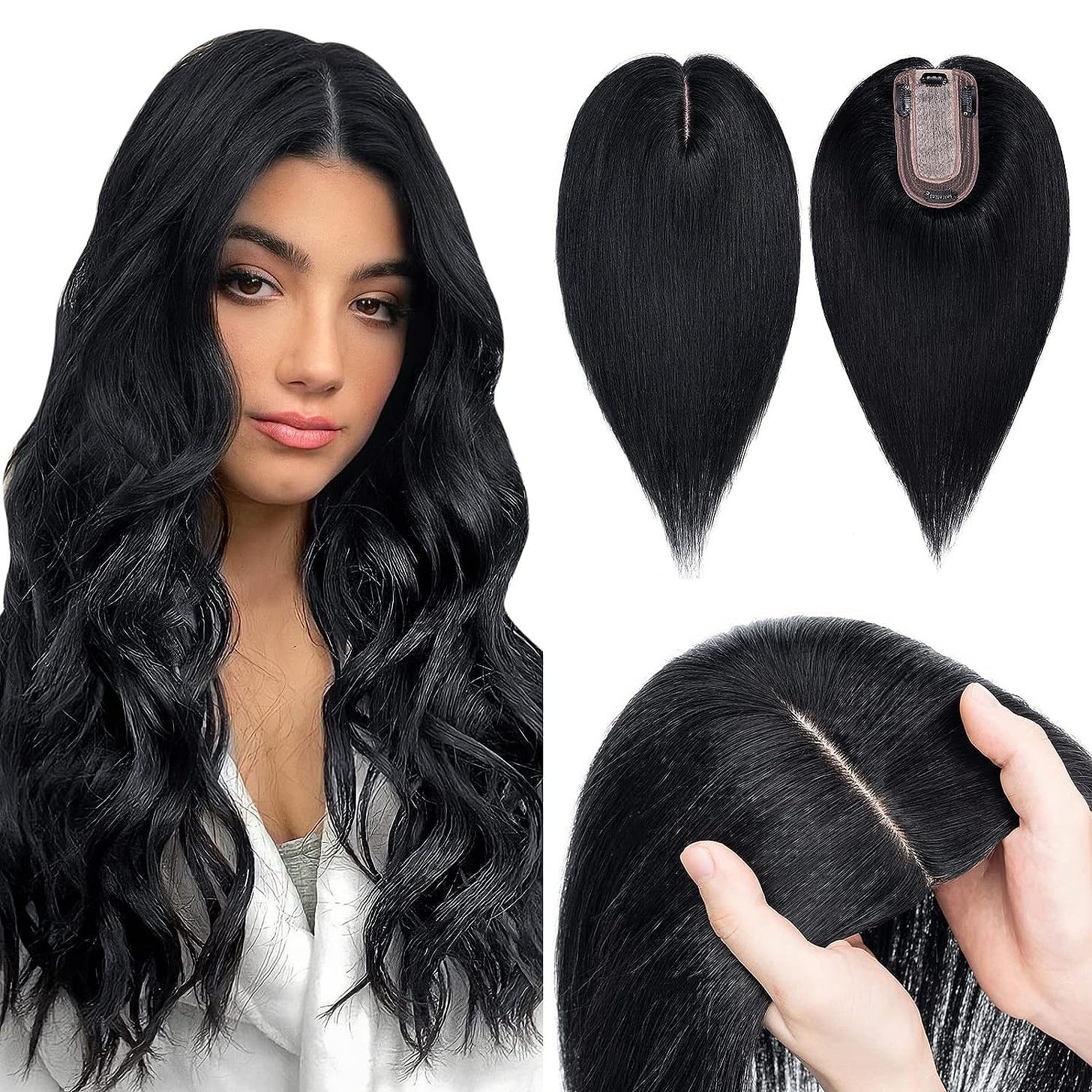
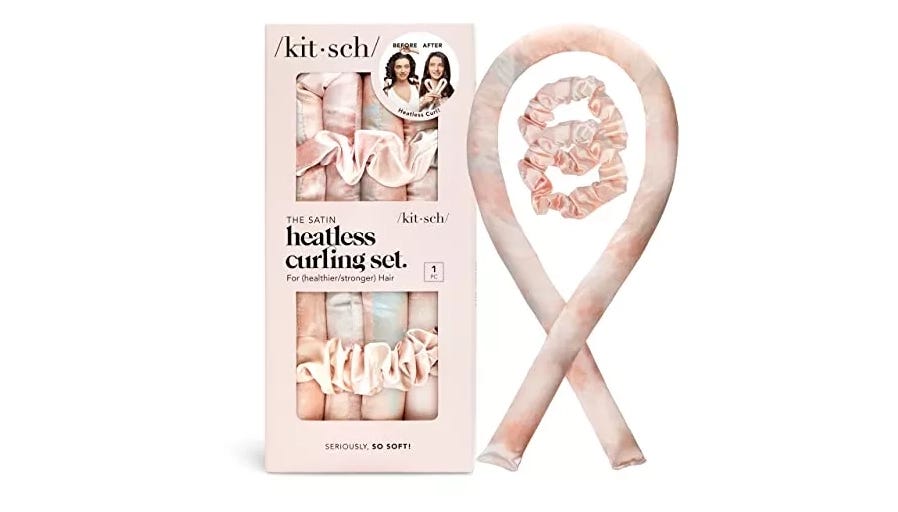
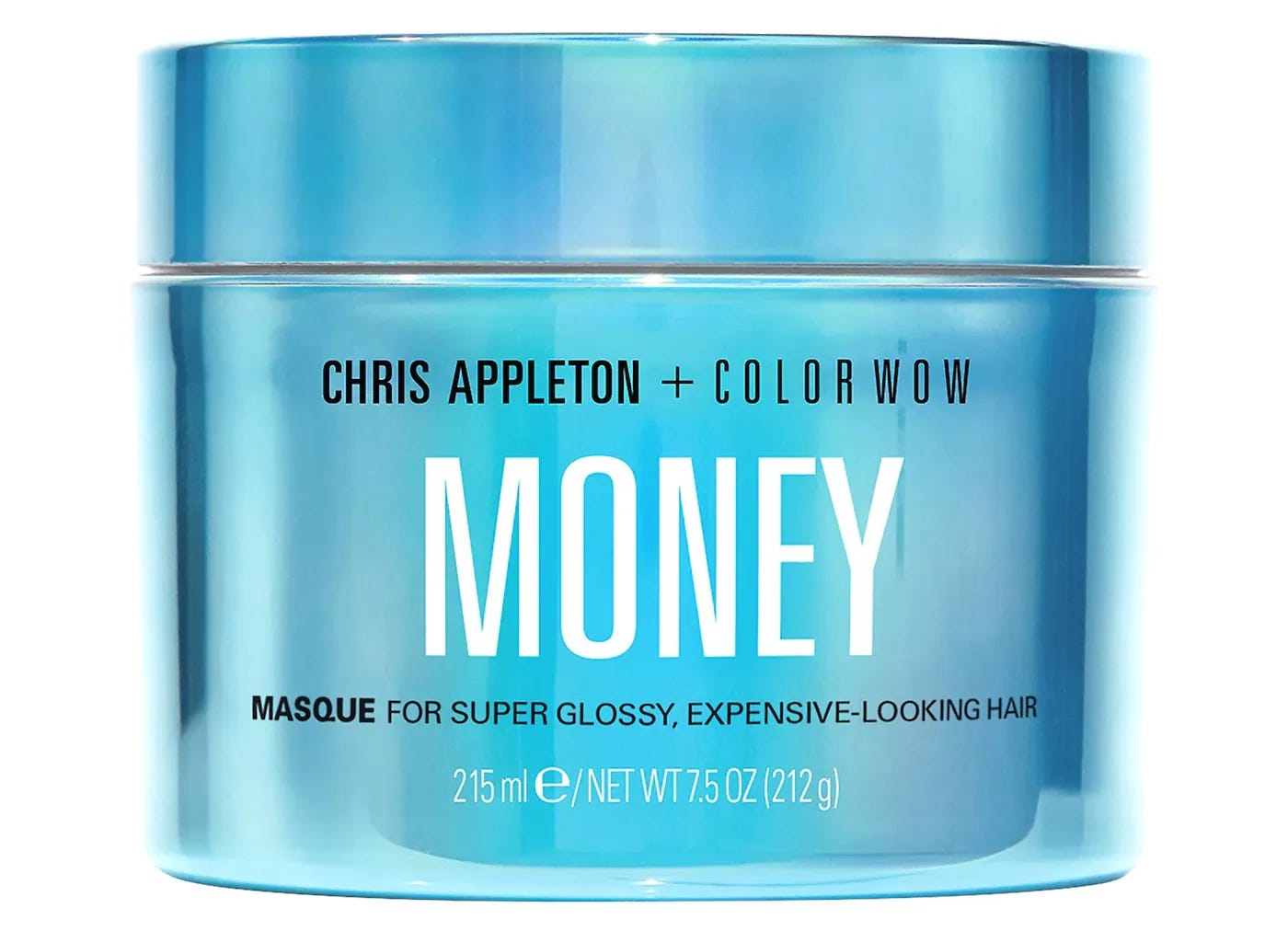
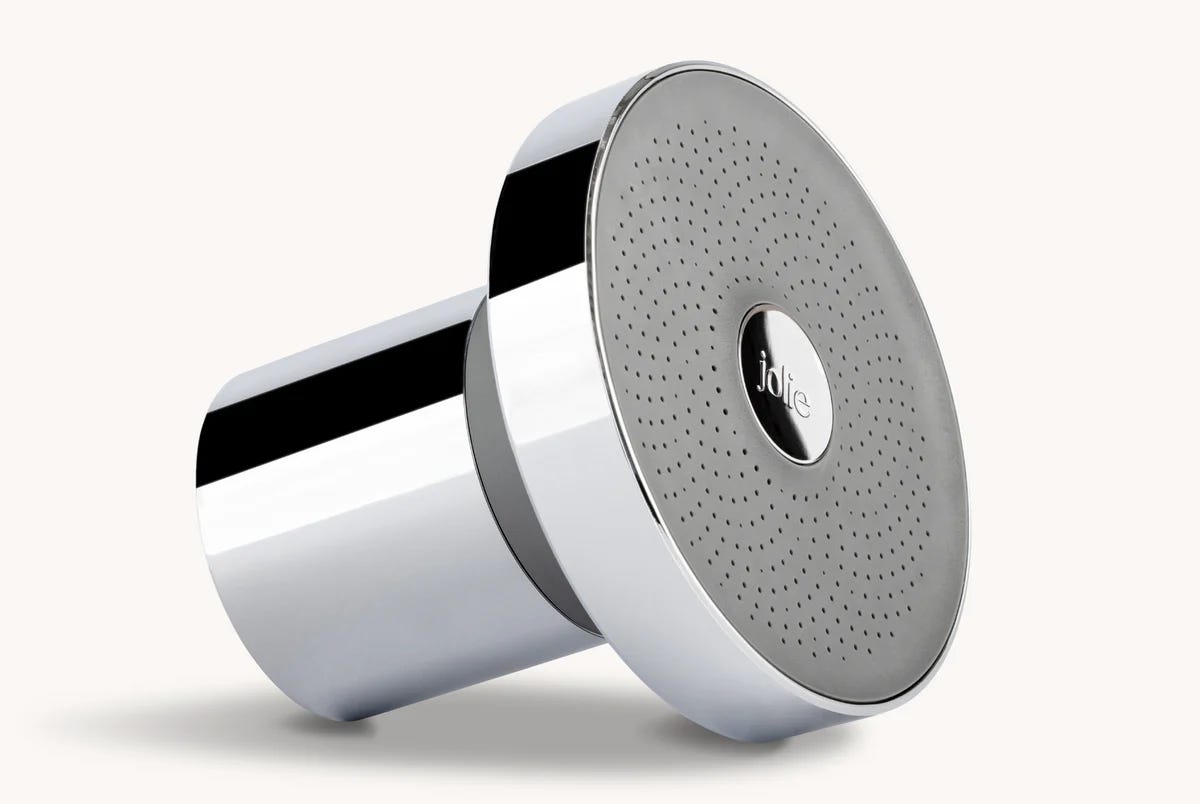
Have you tried red light therapy? Would love to know your thoughts!
As someone who suffers from female pattern hair loss, I appreciate the candor and the product recommendations. Thanks!